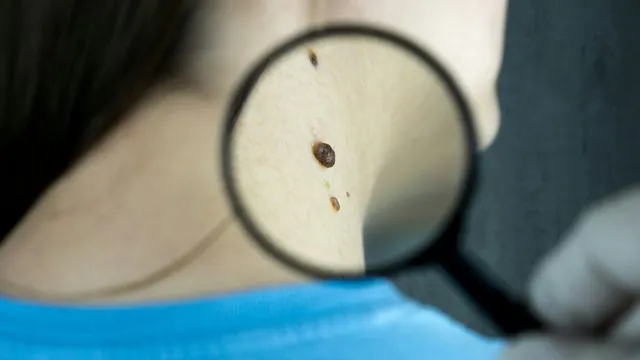
Revolutionary Microneedle Skin Patch Could Transform Melanoma Testing at Home
2025-07-29
Author: Rajesh
At-Home Skin Cancer Testing: A Game Changer
Imagine being able to test for skin cancer in the comfort of your own home. Thanks to groundbreaking research from the University of Michigan, this dream could soon become a reality. The innovative device, known as ExoPatch, employs a silicone patch embedded with tiny microneedles designed to quickly differentiate between melanoma and healthy skin.
The Science Behind ExoPatch
The ExoPatch is equipped with star-shaped microneedles, each measuring just 0.6 mm long and less than 100 nanometers at the tip. This unique design allows for a virtually painless application that only penetrates the uppermost layer of skin, known as the epidermis, without drawing blood.
According to Sunitha Nagrath, a leading researcher on the project, these microneedles are coated with a gel infused with Annexin V, a protein that attaches to exosomes—tiny particles released by cells that carry essential molecules like DNA and RNA. Exosomes have gained attention for their role in communication between cells and as potential early indicators of cancer.
How It Works: Fast and Efficient Testing
The magic occurs within just 15 minutes. Users apply the ExoPatch, which enables the microneedles to extract exosomes from beneath the skin's surface. After removal, the patch dissolves in an acidic solution, releasing the captured exosomes. A simple test strip dipped in this solution will indicate the presence of melanoma exosomes—two lines for a positive result, just like at-home COVID-19 tests.
Promising Results from Animal Tests
In initial tests on pig and mouse skin, the ExoPatch demonstrated impressive capabilities. Imaging confirmed the microneedles penetrated the epidermis effectively, with subsequent tests revealing that the device collected dramatically more exosomal protein from melanoma samples compared to healthy tissues—over 11 times more! This stark contrast was also visible in the test strip results, with significantly darker lines for melanoma-positive samples.
Looking Ahead: The Future of Melanoma Detection
Researchers are now focused on piloting human trials to take this groundbreaking innovation to the next level. If successful, the ExoPatch could revolutionize melanoma testing, allowing individuals—especially those with a higher risk of skin cancer—to conduct their own tests at home and receive immediate results.
"For individuals with fair skin and moles, regular doctor visits for biopsies are often necessary. The ExoPatch could simplify this process, enabling home testing and faster follow-ups with dermatologists," Nagrath explained.
Expanding Horizons: Beyond Melanoma
Moreover, the technology behind this patch could be adapted for detecting exosomes linked to other types of cancer, such as lung, breast, and prostate cancer. "This is the first of its kind designed to capture disease-specific exosomes from skin fluid, and its potential applications could be vast," Nagrath emphasized.



 Brasil (PT)
Brasil (PT)
 Canada (EN)
Canada (EN)
 Chile (ES)
Chile (ES)
 Česko (CS)
Česko (CS)
 대한민국 (KO)
대한민국 (KO)
 España (ES)
España (ES)
 France (FR)
France (FR)
 Hong Kong (EN)
Hong Kong (EN)
 Italia (IT)
Italia (IT)
 日本 (JA)
日本 (JA)
 Magyarország (HU)
Magyarország (HU)
 Norge (NO)
Norge (NO)
 Polska (PL)
Polska (PL)
 Schweiz (DE)
Schweiz (DE)
 Singapore (EN)
Singapore (EN)
 Sverige (SV)
Sverige (SV)
 Suomi (FI)
Suomi (FI)
 Türkiye (TR)
Türkiye (TR)
 الإمارات العربية المتحدة (AR)
الإمارات العربية المتحدة (AR)